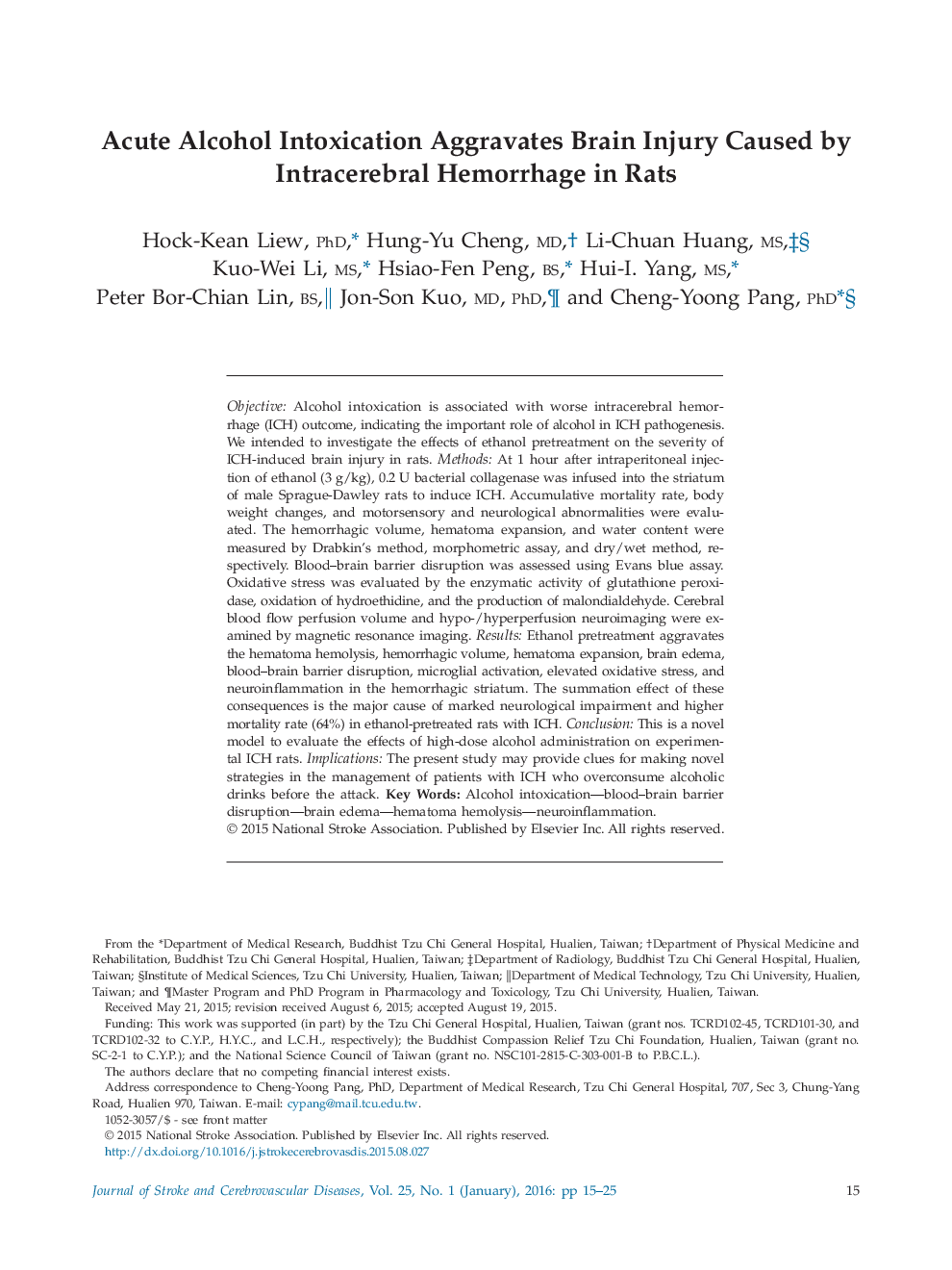| Article ID | Journal | Published Year | Pages | File Type |
|---|---|---|---|---|
| 2702314 | Journal of Stroke and Cerebrovascular Diseases | 2016 | 11 Pages |
ObjectiveAlcohol intoxication is associated with worse intracerebral hemorrhage (ICH) outcome, indicating the important role of alcohol in ICH pathogenesis. We intended to investigate the effects of ethanol pretreatment on the severity of ICH-induced brain injury in rats.MethodsAt 1 hour after intraperitoneal injection of ethanol (3 g/kg), 0.2 U bacterial collagenase was infused into the striatum of male Sprague-Dawley rats to induce ICH. Accumulative mortality rate, body weight changes, and motorsensory and neurological abnormalities were evaluated. The hemorrhagic volume, hematoma expansion, and water content were measured by Drabkin's method, morphometric assay, and dry/wet method, respectively. Blood–brain barrier disruption was assessed using Evans blue assay. Oxidative stress was evaluated by the enzymatic activity of glutathione peroxidase, oxidation of hydroethidine, and the production of malondialdehyde. Cerebral blood flow perfusion volume and hypo-/hyperperfusion neuroimaging were examined by magnetic resonance imaging.ResultsEthanol pretreatment aggravates the hematoma hemolysis, hemorrhagic volume, hematoma expansion, brain edema, blood–brain barrier disruption, microglial activation, elevated oxidative stress, and neuroinflammation in the hemorrhagic striatum. The summation effect of these consequences is the major cause of marked neurological impairment and higher mortality rate (64%) in ethanol-pretreated rats with ICH.ConclusionThis is a novel model to evaluate the effects of high-dose alcohol administration on experimental ICH rats.ImplicationsThe present study may provide clues for making novel strategies in the management of patients with ICH who overconsume alcoholic drinks before the attack.
